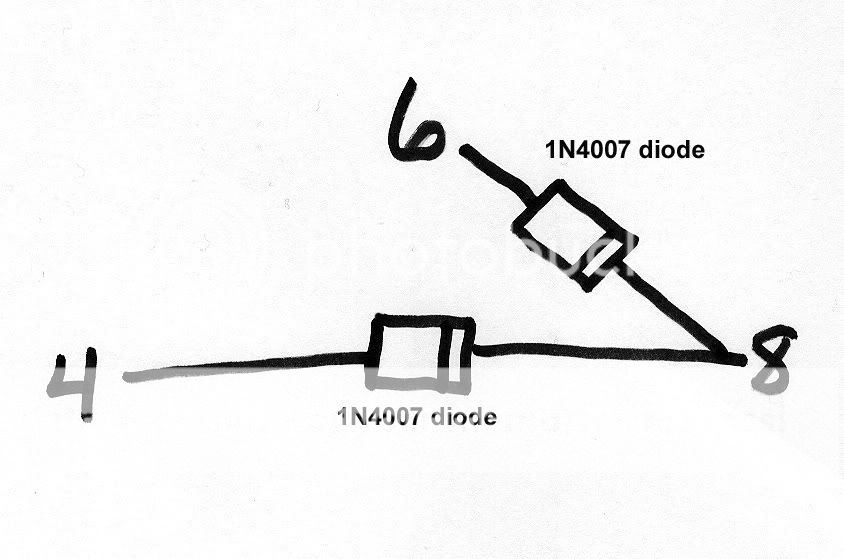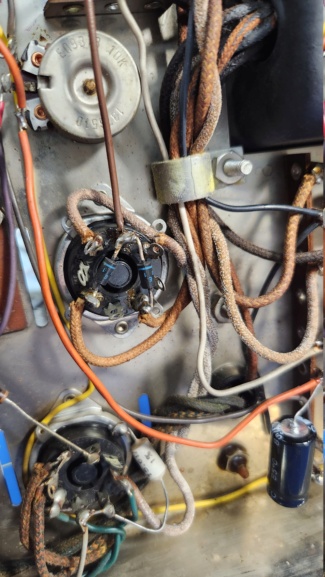You CAN also make your own solid state rectifier. Two ways to do it ... First thing to do is get two 1N4007 diodes. Diodes are very cheap. Radio Shack sells a 30 packet of them for $2.79.
Option 1 > Get an old octal tube that doesn't work anymore and carefully break the glass of the tube. Wear eye protection and gloves and wrap the tube in an old towel and smack it with a hammer. Get rid of all the glass and all the internal tube parts. Use a soldering iron and heat up the pins and pull out all the old wiring to the pins. Run one diode from pin 4 to pin 8. Make sure that the banded end of the diode faces pin 8. Solder both ends into the pins on 4 and 8. Run a second diode from pin 6 to the metal on the banded end of the first diode. Solder both connections. Both banded ends of both diodes should face pin 8. Hey - you've just made a suitable solid state rectifier for your amp.
Option 2 > You can also just remove your rectifier tube from its socket and hard wire the two diodes on the inside of the amp to the pins mentioned above. One diode goes from pin 4 to 8 and the other goes from pin 6 to 8. Again, the banded end of both diodes is towards pin 8.
When you turn the amp on the bias will be higher than normal because diodes have a lower forward voltage drop than a tube rectifier. Your 1.56 volts DC bias voltage with the tube rectifier may be at 1.90 volts DC with your solid state rectifier. Maybe you should turn both bias controls DOWN a little even before you turn the amp on. Let it warm up a little and rebias both channels. Solid state rectifiers will supply more high voltage at higher volume levels. The result of this fact is that you will usually notice tighter and better bass at higher volume levels by using a solid state rectifier. At normal listening levels you won't really notice any difference between a tube and solid state rectifier.
Now the thing is when you turn the amp on the high voltage will be there immediately but you will get no bias at your bias measuring points until the output tubes heat up. Some say that this is bad for your output tubes and can cause "cathode stripping" of the output tubes. The use of a GZ34 rectifier tube does allow the high voltage to come on slower. Some say you should put in a manual "high voltage delay" switch in your amp if you use a solid state rectifier. If you want you can easily put in a SPST switch in series between pin 8 of the rectifier tube and the quad cap. What you would do in a case like this is turn your amp on, wait about 30 seconds and then turn your delay switch on to apply the high voltage. Personally, I question whether a switch like this is really needed. Keep in mind that both the Dynaco ST-35 power amp and the Dynaco SCA-35 integrated amps had solid state rectifiers with NO HIGH VOLTAGE DELAY. The fact that thousands of these ST-35 and SCA-35 amps are still working fine after 40+ years leads me to believe that the need for a high voltage delay switch may be somewhat overstated.
Bob
Poor man's solid state rectifier schematic below ...

Commercial solid state replacement rectifiers. T-SSR01 on left and a Weber Copper cap on the right





